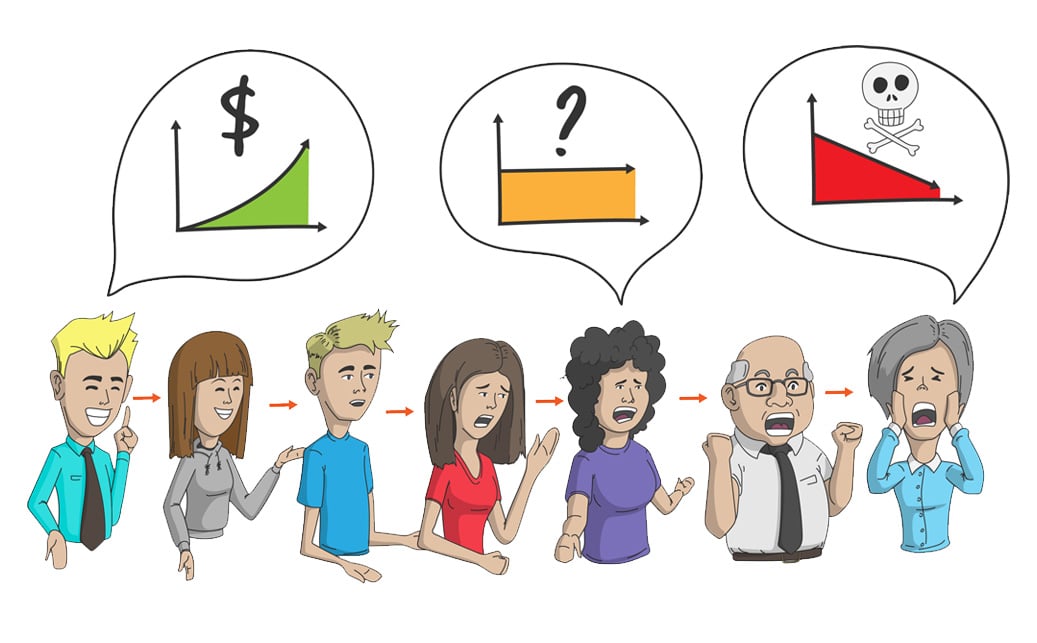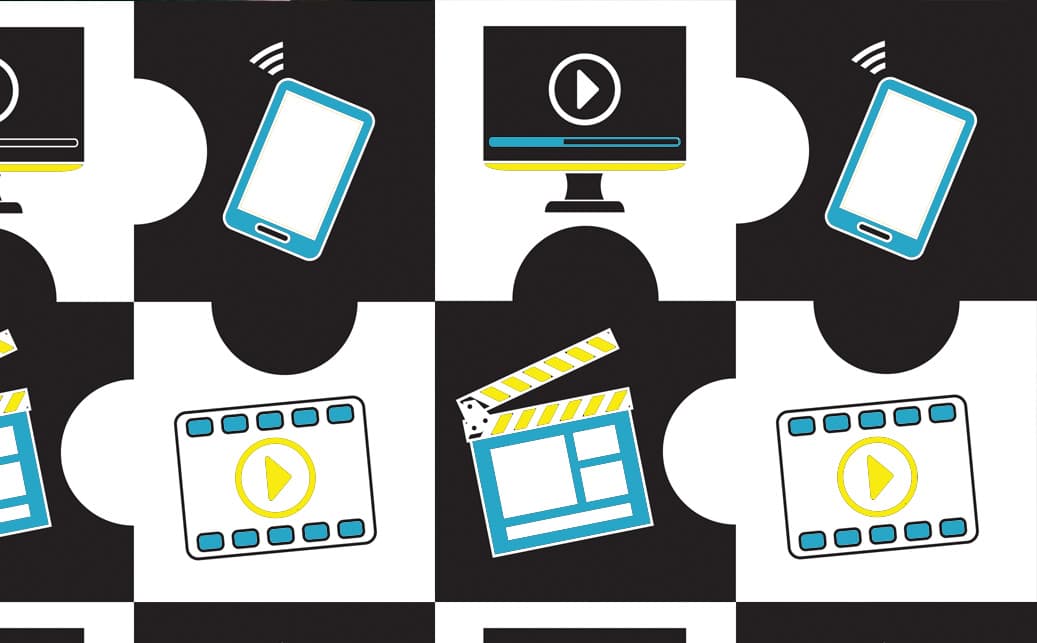Research shows half of the company’s change initiatives fail, and only 34% achieve the intended result. (Gartner, 2020). Recent studies indicate that this challenge has intensified, with 70% of change initiatives now failing, primarily due to poor communication and leadership misalignment [1]. These findings underscore the pivotal role of effective change management communication in bridging leadership gaps and aligning stakeholders at every level of the organization.
Where does resistance to change come from? Often workplace changes are perceived as “imposed” and unnecessary. No one likes imposed changes or changes that we don’t understand.
Therefore, daily communication is an essential part of change management. Effective change management communication begins by aligning senior leaders with a clear vision, ensuring employees understand the reasons behind organizational change. This underscores the need for a change management communication plan that lays out the sequence and timing of most important messages.
Informing employees about the change and its purpose streamlines the process. Without communication and transparency, resistance will always be extremely high. If resistance exists, the change initiative will fail.
During the process of a digitization project, a large corporation neglected to communicate the need for a change. So, their employees rejected the change, not understanding its purpose.
a
Although IT carried out the changes in accordance with the art, the overall vision became displaced and rejected.
a
In another example, a large construction company, with which we have had the pleasure of working on a long-term basis, highly values communication.
a
Every detail is taken into account when communicating with their system’s business users, including the application form’s layout, the button’s colors and arrangements, and the button’s labels.They supplement these efforts with multiple communication channels to reach both office and field employees.
a
Ultimately, everything is well thought out, and the client’s project team knows how to work the interface between business and IT.
a
The client’s project team understands, in addition to the technology’s implementation, the extreme importance of ensuring everyone’s comfort and understanding via intuitive functionalities.Such effective communication ensures that misunderstandings are minimized at each stage of the change management process.
a
The project also involves a person from the client’s internal communications team, who keeps employees informed about changes.
This communications resource plays a pivotal role in crafting and disseminating specific messages tailored to various stakeholder groups.
The effect exceeded expectations. “The changes are going very smoothly, and are well received by the employees – Jacek Drozdz, business partner at GoNextStage.
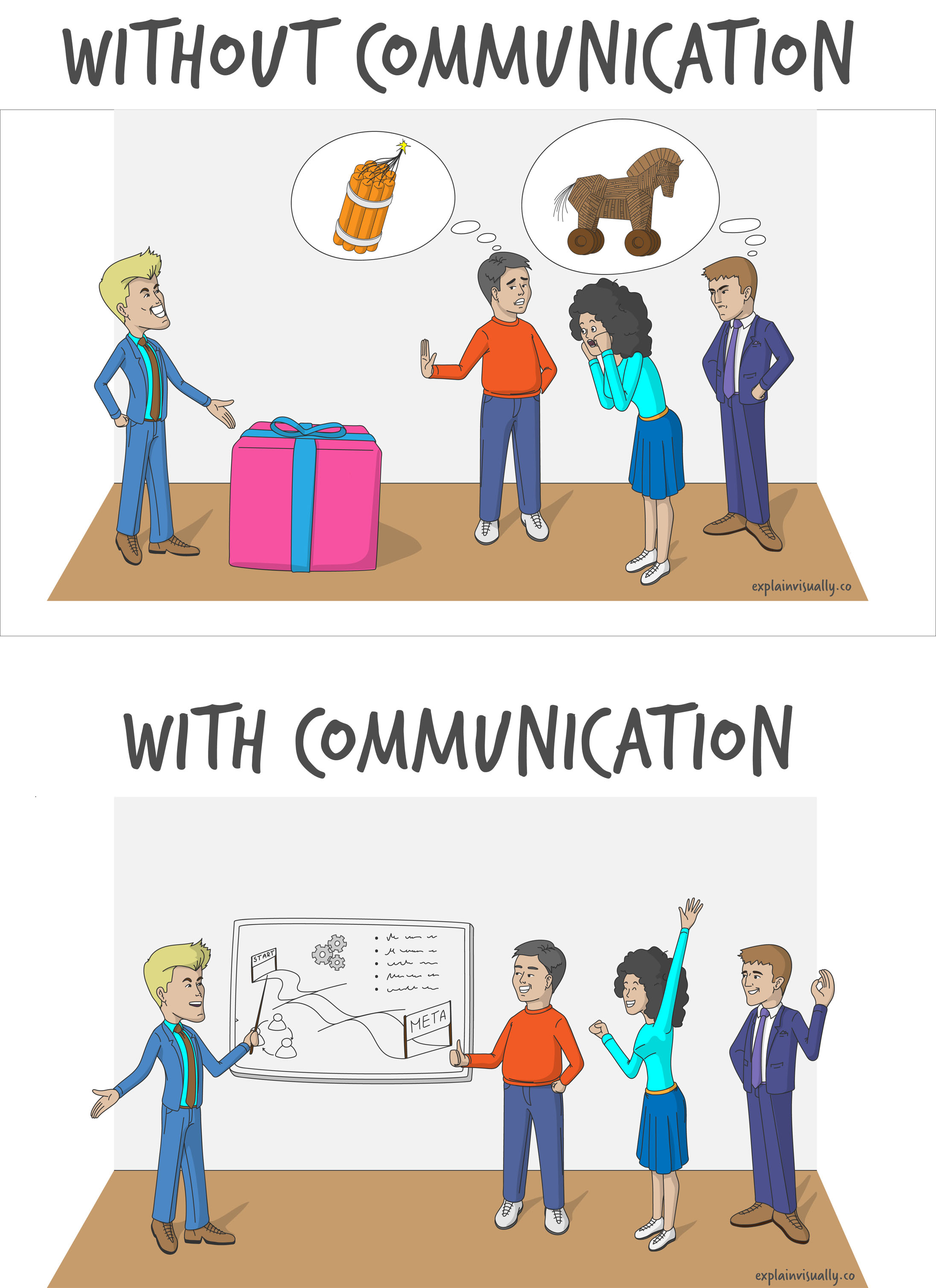
Communication in change management:
1 of 7 success factors
Dr. Peter Kaczmarek-Kurczak of Kozminski University lists communication as 1 of 7 factors responsible for the success of change. These 7 factors are:
- communication regarding the change,
- rationale for the transformation,
- sense of justice,
- sense of participation,
- level of prevalence of cynicism in the organization,
- feelings toward change,
- behavioral support for change.
In this article, I focus on the first factor: communication.
How is change communicated? At what stages? To whom are the messages directed, and who directs them?
Communication planning before, during and after change implementation
A communication plan often considers only the implementation stage of change itself. It does not take into account the two key stages: before and after implementation. Comprehensive change management communication should therefore span the entire lifecycle, preparing stakeholders beforehand and reinforcing adoption afterwards.
Communication regarding future changes should start as early as possible. In person meetings combined with digital updates ensure that both formal and informal communication preferences are respected. It is good practice to start communicating plans for the changes to employees even before the project starts.
People like to feel comfortable and understand what changes will be made, why those changes are needed, and how they will be implemented. This requires systematic and repeated updates throughout the project.
a
Therefore, the earlier a business communicates changes with their employees, the greater their chances of success. Importantly, companies must share these communications with all employees.
a
Insufficient communication is a major problem when it comes to guiding employees through institutional change. That is why successful organizations practice transparency and provide information before, during, and after the change process, achieving greater results – adds Jacek Drozdz.
Communication must be continuous:
- at the beginning of the implementation of the changes,
- during the course of the changes,
- and after they are completed.
In fact, a plan should be developed that includes different forms of communication taking place at different times – says Karin Naslund, Naslund Consulting Group Inc. Such well planned initiatives often feature a feedback loop, allowing project teams to gather feedback and adjust tactics in real time.
Building a robust change management communication plan
Developing a communications plan involves:
identifying target audiences,
selecting best communication channels,
reinforcing core messages to support a successful change management strategy.
It acts as an ongoing process rather than a one-off campaign, reinforcing key messages throughout the effort.
Begin by mapping out stakeholder groups and tailoring messages for senior leaders, direct supervisors, and frontline employees. Ensure each group knows their role and understands the timeline for key milestones. Immediate supervisors should be equipped to lead team meetings that echo the strategic alignment set by the executive team.
Read also: Best practices for communicating organizational change to employees.
Match communication to the stage your employees are at
Psychiatrist Elisabeth Kübler-Ross created a change curve that takes into account the different stages of grief.
Wait a minute, what does this have to do with change management?
It turns out quite a lot. Employees undergo stages of grief when implementing major changes in a company much like family and friends experience when losing a loved one.
This is both good and bad news.
Here’s the bad news. Even well-thought-out changes that will benefit everyone may still be met with initial resistance.
Here’s the good news. With this knowledge, we can better prepare ourselves and tailor communication to the stages that employees will go through in the change process.
So, it is worth getting acquainted with the “enemy” first and learning about these stages.
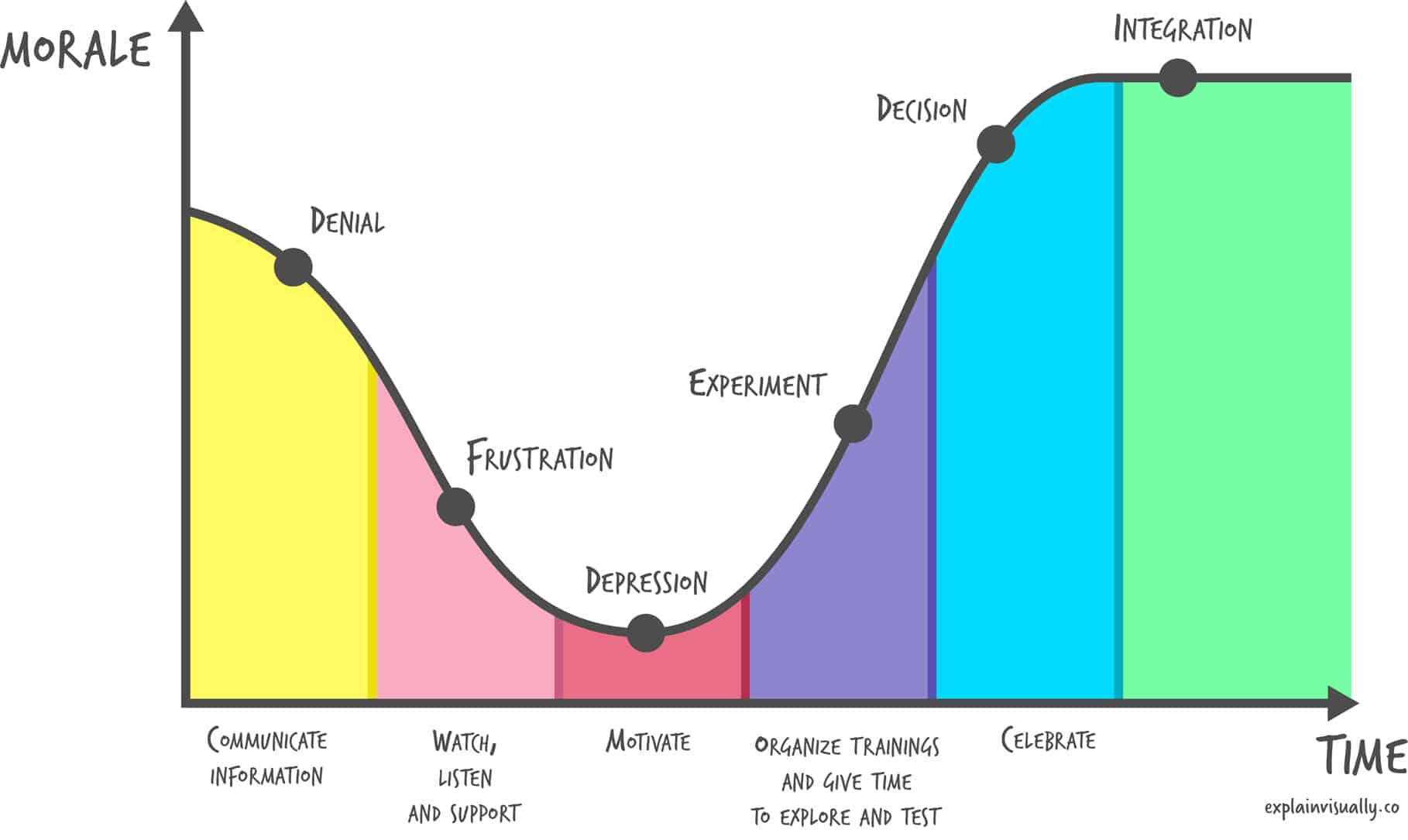
Stage 1: Denial
In the beginning, employees may experience shock and denial. The reflex reaction to a sizable change is: “no!”.
“Why do we need this change? We don’t need it, and we don’t want it.”
Unless a plan for implementing change is presented, employees will quickly return to the status quo. For example, despite the arrangement that all communication are now conducted on Asana, employees may exchange messages and send files with company data via WhatsApp. since it is more convenient and they don’t see a problem. Ultimately, they ignore the change in communication protocols. This scenario highlights how insufficient change management communication allows legacy behaviors to persist and erodes the effectiveness of new tools.
At this stage, here’s what to communicate:
Employees want to understand what’s going on.
They need the following information about the changes:
- Why are we making the change?
- What does it imply?
- What does it mean for them?
- What is the plan for its introduction and the time frame?
In short, give the facts and specifics.
Stage 2: Anger
Once people have recovered from the shock, it’s time for REACTION. This often means anger, usually resulting from fear of the introduced change.
At this stage, here’s what to communicate:
Address objections proactively by preparing counterarguments.
Remind employees what they will gain from the changes, not just what is required of them.
Establishing an open dialogue to address employees’ doubts encourages greater goodwill for the initiative and eradicates some of their concerns.
For example, employees may openly criticize the change, saying among themselves “They always come up with something, and they only do it to make our lives more difficult.”
At this stage, here’s what to communicate:
Directly address the valid concerns employees will experience in a polite and affirming manner. To prepare for this, write down all the objections employees may have during the implementation of the change, and then find answers to them, including counterarguments.
At this state, remind employees what they will gain from the changes, not only of what is required of them.
For example, emphasize how much easier it will be for employees to find all their project materials in one place, now that all project communications will happen on Asana. Doing so saves employees an average of 1.5 hours per week.
Establishing an open dialogue to address employees’ doubts encourages greater goodwill for the initiative and eradicates some of their concerns.
Stage 3: Depression
A decline in morale and excitement is another transitional stage. This slump doesn’t have to last long, but it’s worth remembering that it’s a normal process.
The bigger the change and the more it affects the person, the harder he or she may react to the change process. Employees may say, “It’s all pointless. I don’t want to work in such conditions. I have no desire to work at all.”
At this stage, here’s what to communicate:
Continue to emphasize the advantages of the change. Additionally, praise employees for small progress and outline a vision for the company’s better future. By sharing success stories, you demonstrate positive outcomes and build momentum.
Stage 4: Experimentation
Employees slowly come to terms with change. They know they have to adjust to the new situation. They will now try to negotiate terms and minimize the extent of the change.
They will also slowly begin to try to find their way around the new reality and introduce new procedures and/or tools.
For example, employees may say, “We will use Asana, but what if it’s an emergency, and I’m off the computer? It’s easier for me to send an attachment quickly on WhatsApp or another messenger.”
On the other hand, they have become more familiar with the program, so they may inquire about how to use it and what functionalities it has.
At this stage, here’s what to communicate:
To ensure proper implementation, provide additional training or materials that make each employee’s responsibilities clear. Employees need clear directions to find their way in this new reality on a daily basis. This is where an effective communication strategy ensures that no one is left behind.
Stage 5: Integration
Employees have come to terms with the change. The new rules and work tools are starting to manifest in their daily work habits. Employees may also see (depending on the change) the advantages, e.g. “In the new program everything is in one place, and I don’t waste time looking for files in different emails and messengers.” Their productivity increases.
However, don’t rest on your laurels.
At this stage, here’s what to communicate:
Employees need to receive a clear message that everything they experienced had a clear purpose. Communications should now highlight successes and achievements and show how far everyone has come.
A few years ago, we created an animation series for Millennium Bank that highlights the stages of grief employees experience during the change process. The series focuses on customer service standards and the personal account sales model.
- The first animation acted as a trailer, providing a preview of the changes.
- The second reminded employees why customer service standards are important.
- The third showed what the new standards might look like in practice and what to keep in mind.
- The fourth demonstrated the advantages of a mobile app and how to convince customers to use it.
- The fifth suggested training plans and opportunities the bank may offer employees.
More information about the animation series for Millennium Bank you can find in this case study.
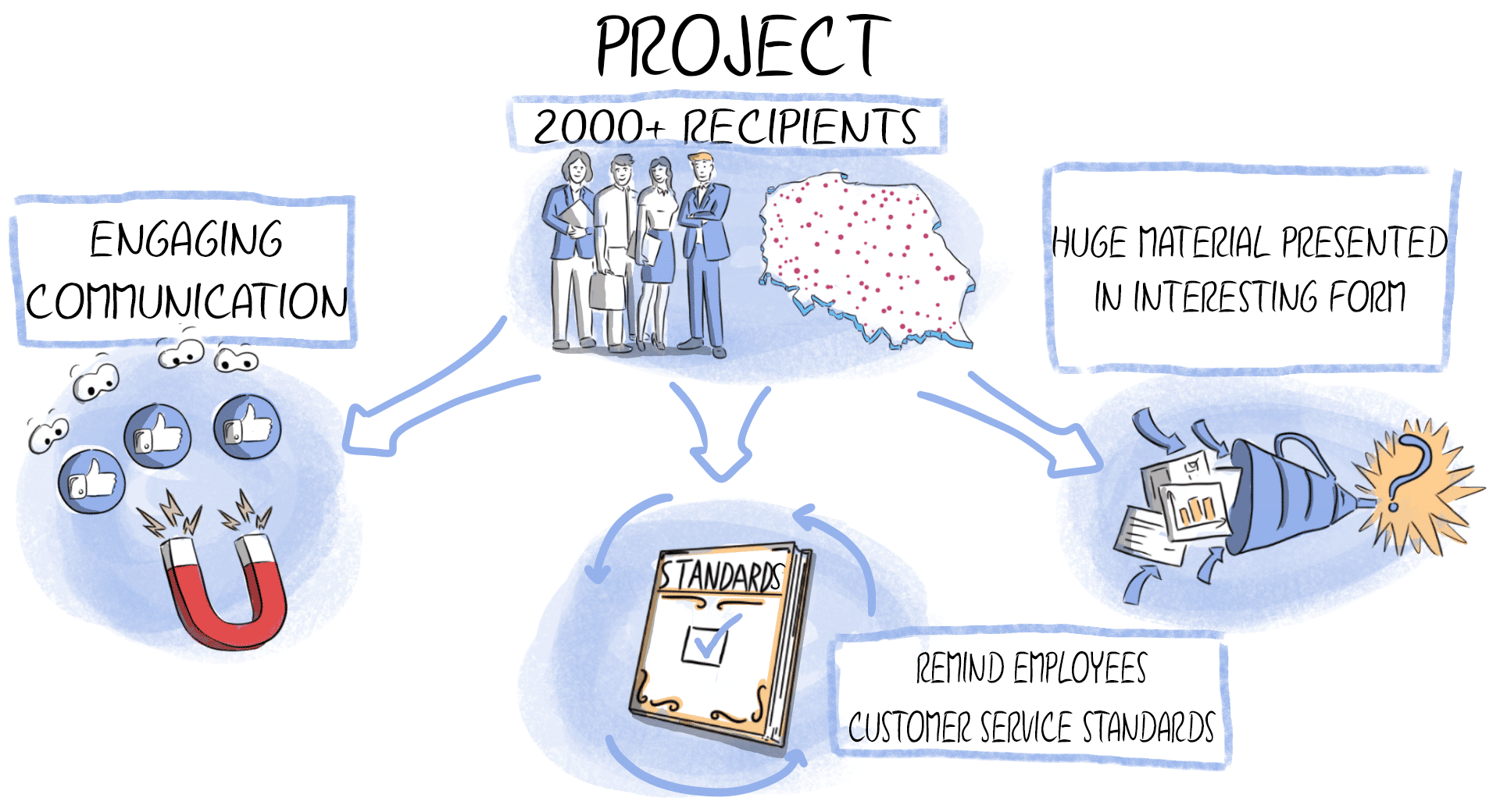
Engaging employees through focus groups and training sessions
Engaging employee groups in focus groups and training sessions creates a two-way communication environment that empowers frontline employees and people managers to support change effectively. Early involvement helps create opportunities for employees to shape the change efforts and fosters a sense of participation.
Early involvement, through surveys or workshops, fosters employee engagement and strengthens their commitment to the change.
Match communication with a change management model
Numerous change management models exist. One of them, for example, is known as ADKAR and recommended by Usama Afifi, managing partner at DEC.
ADKAR provides an example of what thoughtful communication looks like. It overlaps largely with the stages of the Kübler curve.
ADKAR is an acronym for:
- Awareness
- Desire
- Knowledge
- Ability
- Reinforcement
The sections below detail what each of these terms mean to change management.
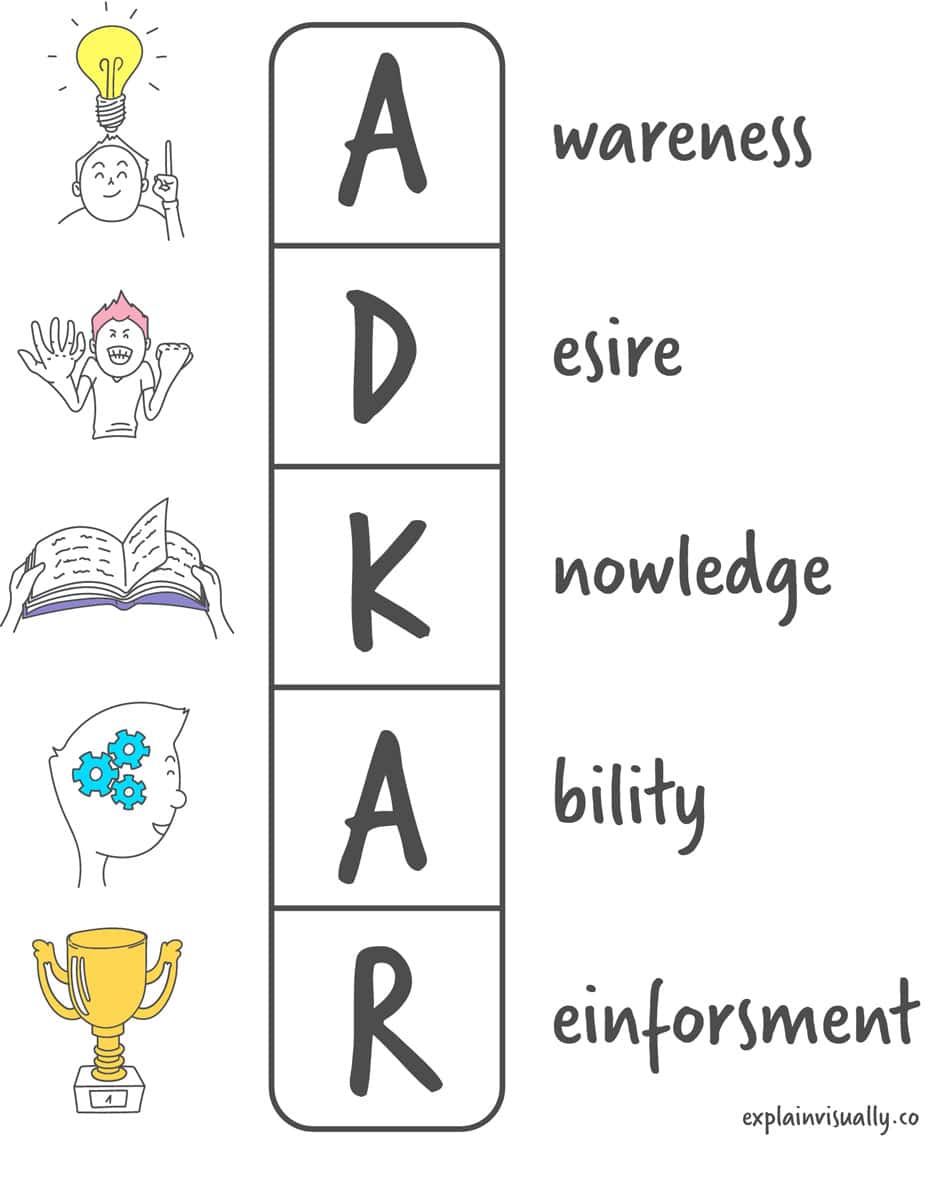
Awareness
Some may not see the problem or the need for change. Therefore, we must inform and convince them why the changes are necessary. Targeted change management communication can illuminate the risks of inaction and build a compelling case for participation and commitment.
For example, we might say, “Currently, our old program works too slowly and inaccurately, causing everyone to waste time and make a lot of mistakes.” Remember! Clear communication of the problem lays the groundwork for subsequent change efforts.
We argument wht the change is needed. We present facts and state the problem. We show consequences by explaining what will happen if we don’t implement the change.
Additionally, we show what will happen when we implement the change, which further emphasizes the advantages.
Desire
Once everyone knows WHAT we are changing and WHY, it is time to make them WANT to participate in the change. At this stage, we present the benefits.
For example, we might say, “The new program will make your work faster and easier, so you will have more time for another task and the overall number of errors will decrease.”
Knowledge
We know what changes will be made and why they are important. Now, it is time to outline the plan of action, demonstrating HOW the changes will be implemented. The plan of action must be precise. Ultimately, the change process can fail if this element is missing.
For example, we might say, “This week you will receive instructions in the mail on how to log into the program. On Monday at 10 o’clock, we will hold a training session and answer questions. On Tuesday….”
Ability
Once changes are made, employees need patience and support. They may still make mistakes and ask questions. Praise them for their progress, share your knowledge and ask if everything is clear.
For example, we might say to employees, “You are using this function of the program well. You can see the progress, but now we can improve…”.
Reinforcement
After a time, employees may want to return to old habits. Therefore, at this stage, we reinforce our message. We continue to monitor the situation, praise for progress, and remind them why we made the change. Open communication and a robust feedback loop help sustain momentum and ensure lasting adoption.
For example, we might say, “Thanks to the changes we made, the number of errors dropped by 20%! Keep it up.”
The message should go through all levels of the company, starting at the top
Develop a cascading messaging strategy that starts with the CEO or Senior Vice President, and then encourage directors and managers to discuss the change in more detail with their teams. Engaging senior leaders sets the tone for change and models the behavior expected throughout the organization.
We usually have trouble convincing senior management, i.e., CEOs, who think introducing communication elements about the change in a project is such “bla bla.” I’m literally quoting a German vice chairman who told my consultant that what we are doing “is such hocus-pocus bla bla.”
a
In this particular case, I had to intervene and say what will happen if we don’t do it. That is, the mere implementation of the project in a mechanical way will result in such resistance that employees will likely need to be threatened with termination.
a
After all, a fish rots from the head.
Therefore, it is necessary to convince senior staff that communication is key. Otherwise, employees won’t follow it – says Usamah Afifi.
The message must be consistent for everyone
Sometimes communicating about the changes being implemented is like playing the children’s game called telephone. While the second person is still able to fairly accurately repeat the sentence conveyed from the first person, a completely different message reaches the 10th person.
The same is true in companies, especially larger ones. The more levels in a company, the greater the chance of the message being twisted.
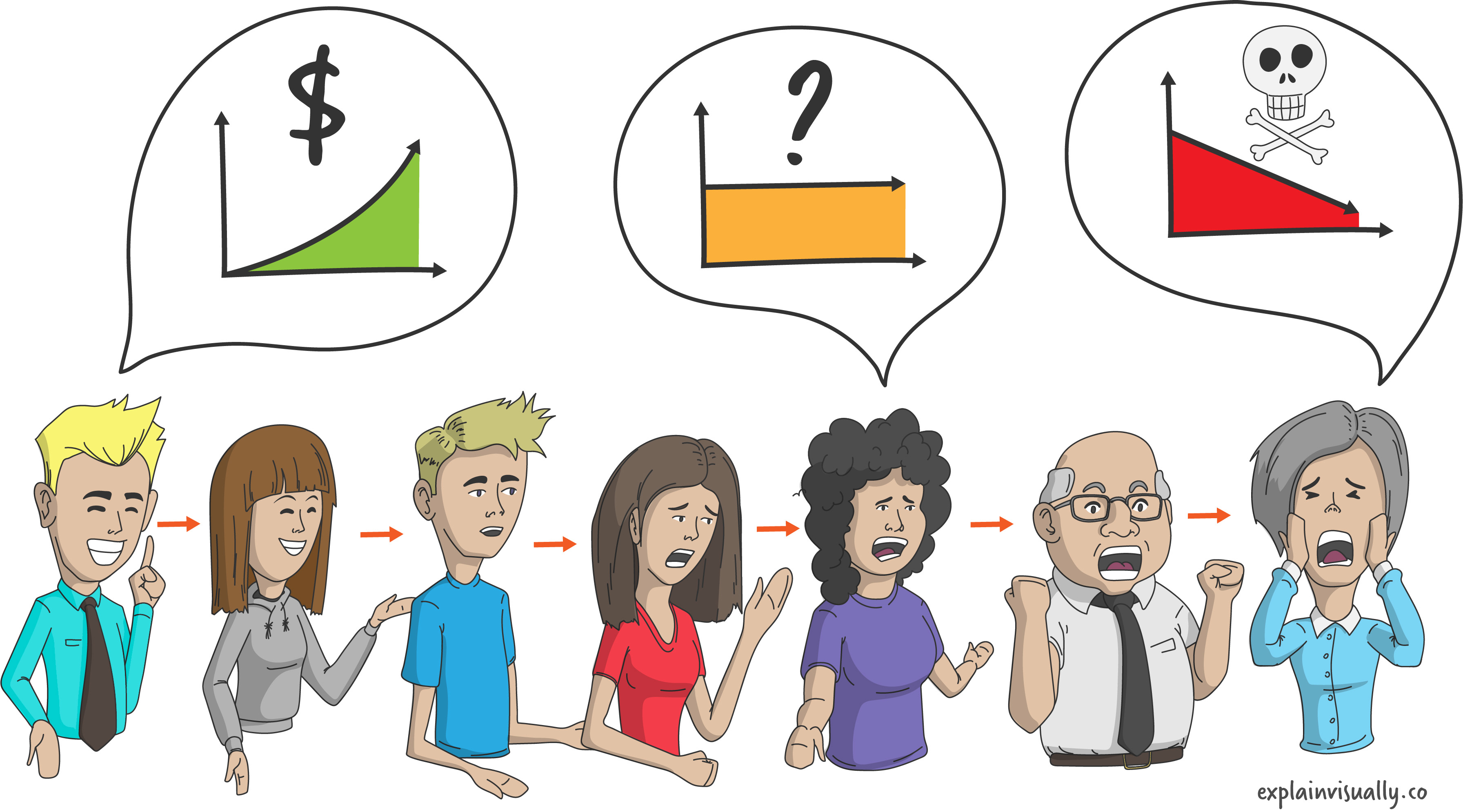
Therefore, communication should be consistent and very clearly specified. Communication is best when clearly presented. Visuals, such as infographics or animations, play a big role.
In the organizations where I work, when someone asks what I would change, I have been saying the same thing for 10 years: communication.
a
Improvements in communication become especially important when you work in middle-management to ensure you convey information properly from the top to the bottom of the organization. A lack in consistent communication causes significant confusion, gossip, and informational chaos.
a
If they get to this communication, for example, trade unions, which have their own message, then the lack of thoughtful communication and designated communication channels is a contributor to the failure of many, many projects – says Przemyslaw Pruszynski.
Emphasize key points directly, making sure everyone understands
When people watch a popular commercial for the hundredth time, they no longer want to hear the same tired slogans, but they are catchy and effective because they are repeated so often.
The same is true of institutional communications about change. By repeating the purpose and advantages of the change, we make sure this message reaches everyone, and reinforces those core messages that drive successful change management strategy.
Soo… reinforce key messages at every opportunity to build familiarity and trust.
Repeating messages is key. However, it is also worth making sure everyone has heard them and understood them well.
a
I used to think everything was obvious because people hear what I say to them. After years of working, I’ve realized different people understand my words differently. That’s why it’s a good idea to ask people to confirm and repeat what they understood, then we know when communication is consistent.
a
So, we ask, we talk, and then we ask again. The following questions help clarify whether an employee understands: “What do you think about this? How do you understand it? Would you repeat what the point is?” – says Przemysław Pruszyński.
Involve employees throughout the entire change process
74% of leaders say they involve employees in the change implementation strategy. Meanwhile, only 42% of employees feel they are truly included in the process. (“Changing Change Management. An open-source approach,” Gartner 2019) Actively involving the average employee in the decision making helps to personalize change communication and makes employees feel valued. Actively involving employees in change implementation planning increases the chance of success by as much as 12%. (Gartner, 2020)
Current research shows that when employees feel heard and engaged throughout the change process, their willingness to support organizational change increases significantly.
Communication is about allowing employees to implement their ideas and experiment within the boundaries set by the company.
True communication is a conversation. As a rule, it implies a two-way discussion, not a monologue.
Leaders should decide “what” we change while involving employees in “how” we make those changes. People resist change when it is imposed on them. When they are part of it, they see what the impact is and how they can influence it.
a
One of the first things leaders should do is identify key stakeholders, both individuals and groups, and determine ways to engage them early and often – says Edith Onderick-Harvey, NextBridge Consulting.
By sharing success stories from previous well executed projects, you boost confidence and encourage buy-in for new change management efforts.
When you involve someone in the change process, that person then feels that it’s their ‘baby’ too.” Additionally, it’s hard for employees to complain that something is wrong with the new procedures since they themselves took part in their introduction – says Jacek Drozdz.
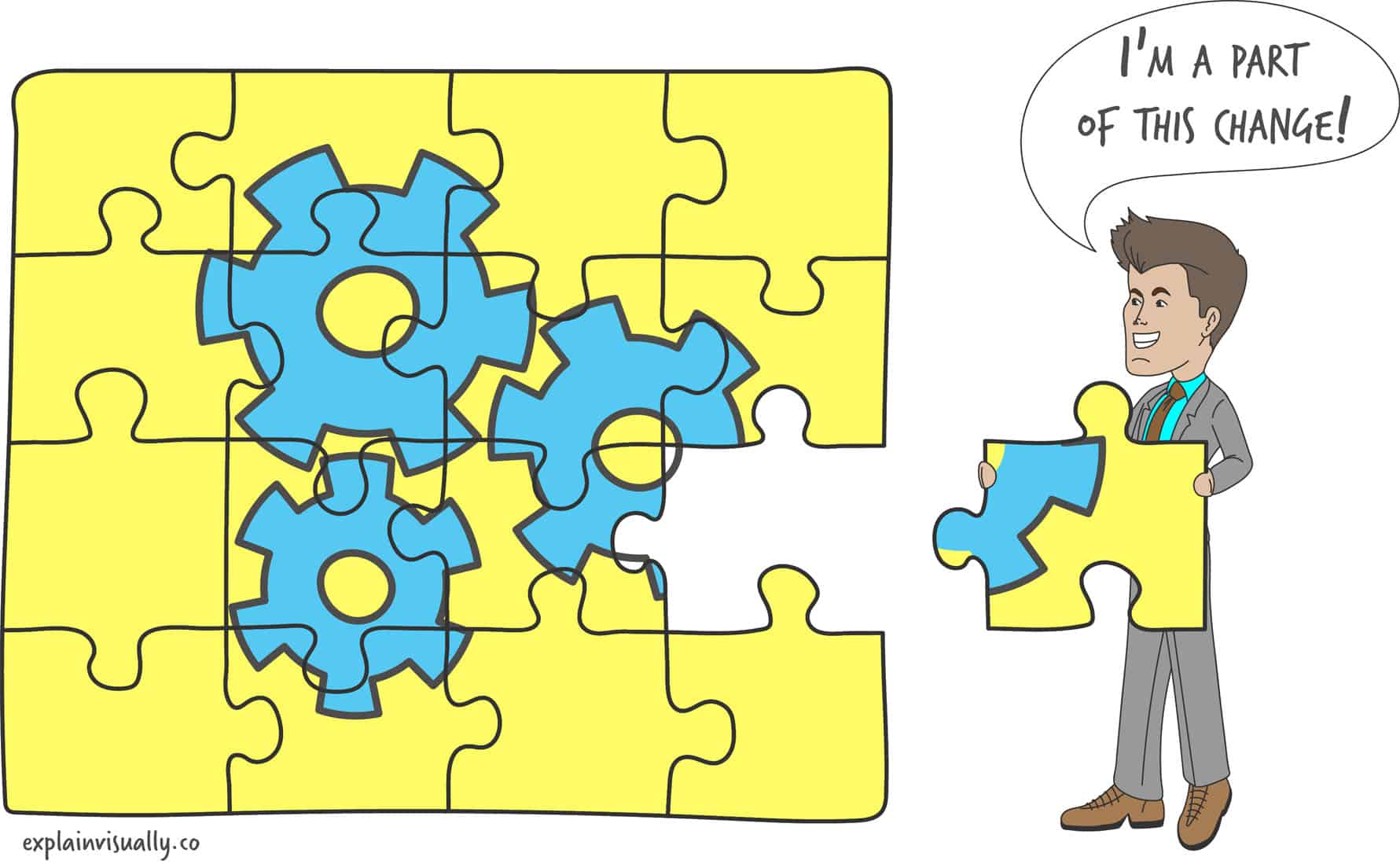
The message must be tailored to the audience
Especially in large organizations, but also in smaller ones, too. Different groups are reached by different messages. That’s why the message must be consistent. We need to know what we are communicating whether in an email or a factory newsletter or at a meeting.
a
“Secondly, communication must be tailored to different audiences. For example, in my experience in production teams and in factories, 90% of the team is shop floor workers. Employees need very short and to-the-point messages, and it’s good when they are visual – says Przemyslaw Pruszynski.
For the manager, it is important that the company will suffer fewer losses and accidents on the shop floor thanks to the new procedures.
For the shop floor worker, it will be important that the new procedures will provide him or her with greater safety while making his or her job easier.
For the office worker, it will be important that the new procedures will require a change in the way some documents are filled out, but this will not affect his working hours.
So, the main message is the same for everyone: we are introducing new safety procedures in the hall starting next month. However, the way they are communicated may differ slightly. The channels for communicating the information will also be different to ensure effective communication reaches each stakeholder group.
Communication should take place across multiple channels
Managing change well means making the most of a company’s communication potential. McKinsey conducted a survey in 2021 of companies’ employees (of different sizes of companies, in different industries, in different positions) who went through a change process in their workplace in the last 5 years. It turns out that the success of the change is strongly correlated with the number of actions taken by the company.
Don’t rely on 1-2 channels to communicate the change. Try to use all available ones.
Using a variety of channels from emails and newsletters to posters and screen savers reinforces awareness and accommodates diverse communication preferences.
So, what are these communication channels?
Meetings and presentations – provide opportunities for interaction, are more personal, and shorten the distance. They provide an opportunity to ask questions and therefore address employees’ concerns. However, it is easy to misrepresent messages (game of telephone), and some information given orally can be misunderstood or quickly forgotten.
- Emails, newsletters – everything is written out in black and white; the message reaches a wider audience. However, many people read emails superficially, so details are lost.
- Blog articles – you can clearly convey more information, and go into detail. However, not everyone reads them, so the information will not reach all employees.
- Dedicated channels (Slack) about the changes being made -. you can regularly publish useful and up-to-date material on the changes being made. Questions can be answered in real-time.
- Intranet – provides notifications about the latest materials, including opportunities to discuss topics and ask questions. The company, depending on internal settings and arrangements, has many options for reaching employees. The downside is not everyone appreciates this form of communication and not everyone uses the intranet.
- Screen savers – are especially useful when you want to motivate employees or remind them of the advantages of the changes. This approach mostly applies to the introduction stages.
- Newsletters – like articles, they help you get into the details of the changes being made, and also sometimes present them visually (e.g., with infographics). Not everyone reads them, but they allow you to reach those who don’t work at a computer and/or don’t read blog articles.
- Posters – like newspapers, they help reach those who don’t work in front of a computer every day. They are a visual reminder that summarizes information about the changes. This approach mostly applies to the stages of change that happen during and after the implemented changes, not at the beginning.
- Bulletin boards – like posters and newspapers, they provide an opportunity to reach those working in an area without computer stations. Additionally, you can reach those employees who do not read newspapers.
Ultimately, we increase the chance that the message will reach everyone in the company.
Several years ago, Orange (or more precisely the company’s Customer Experience team) created and implemented continuous improvement methodologies inspired by approaches such as Lean Six Sigma and Kaizen. They wanted to tell employees about the program but knew it was too broad of a topic for mailing.
The company decided to create a clear and interesting animation.
The animation we prepared for the company acted as a downloadable guide employees could look at if they forgot how to use any of the methods.
We write more about this in this case study.
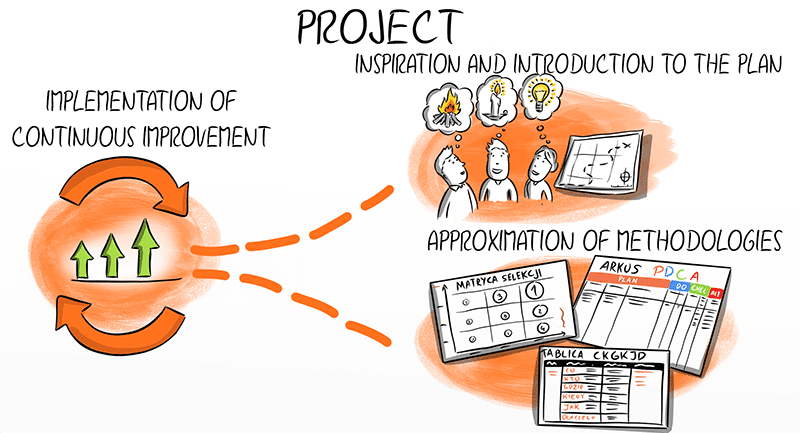
Screenshot from the animation for Orange
Emphasize the benefits for employees
Don’t forcefully frost the cake. If a lot changes are coming, then admit it. Don’t say, “you will only feel it slightly.” The lie will quickly come out in the wash.
Instead, say that not all changes may go smoothly, and it will take some work. Meanwhile, explain the benefits of the changes and what employees can expect.
Those who have brought change to a company have probably heard that you need to show employees “the big picture”.
Yes, the big picture is needed, but on a daily basis, employees are interested in current problems, not future problems. Therefore, the change being introduced needs to be linked to the difficulties that employees are currently having.
The old marketing credo is: What’s in it for me?
Therefore, point out what employees will gain from the changes. Initially, they may not see all the advantages themselves. That’s your role.
For example, when implementing an ERP system, it is worth saying: “Currently, it takes us several hours to count production. ERP will allow us to do it in tens of minutes.”
a.
Likewise, it could be noted that “Currently, every change in the warehouse has to be written down manually, which takes time and creates a greater risk for mistakes. Once the ERP system is implemented, most of the changes will be made automatically. There will be no need to spend time fixing mistakes because there will be fewer mistakes.
a
When possible, it’s a good idea to let employees experience a “sample of the change.”
People are afraid of the unknown. Once the invoice is test-entered into the system, ERP will be less scary, because it will be “less unknown” – says Jacek Bartczak.
Many people see change as an opportunity for themselves. For example, if one implements a CRM solution In an electronic company I worked for, sales efficiency increased, and the results became better – says Usamah Afifi.
Take care of interesting and diverse materials
Communication shouldn’t be done with text alone. Make sure you have the right visuals. This will make it easier for employees to understand and remember key points. It will also serve as a download for them to return to in order to recall selected information.
In addition to the text itself, materials can be presented and supplemented with:
- infographics,
- illustrations,
- cartoons,
- video footage,
- animations,
- audio recordings,
- DGR,
- icons,
- tables and charts.
We prepared a visual representation of the process in the form of animation for Santander Bank Poland. The company’s Service Design team created Compass, which is an internal process standard for developing services and products. Thanks to it, the bank’s employees implement business ventures without relearning how to accomplish this each time.
In fact, they have a manual that guides them through the client-centric process step-by-step.
We write more about our cooperation in this case study.
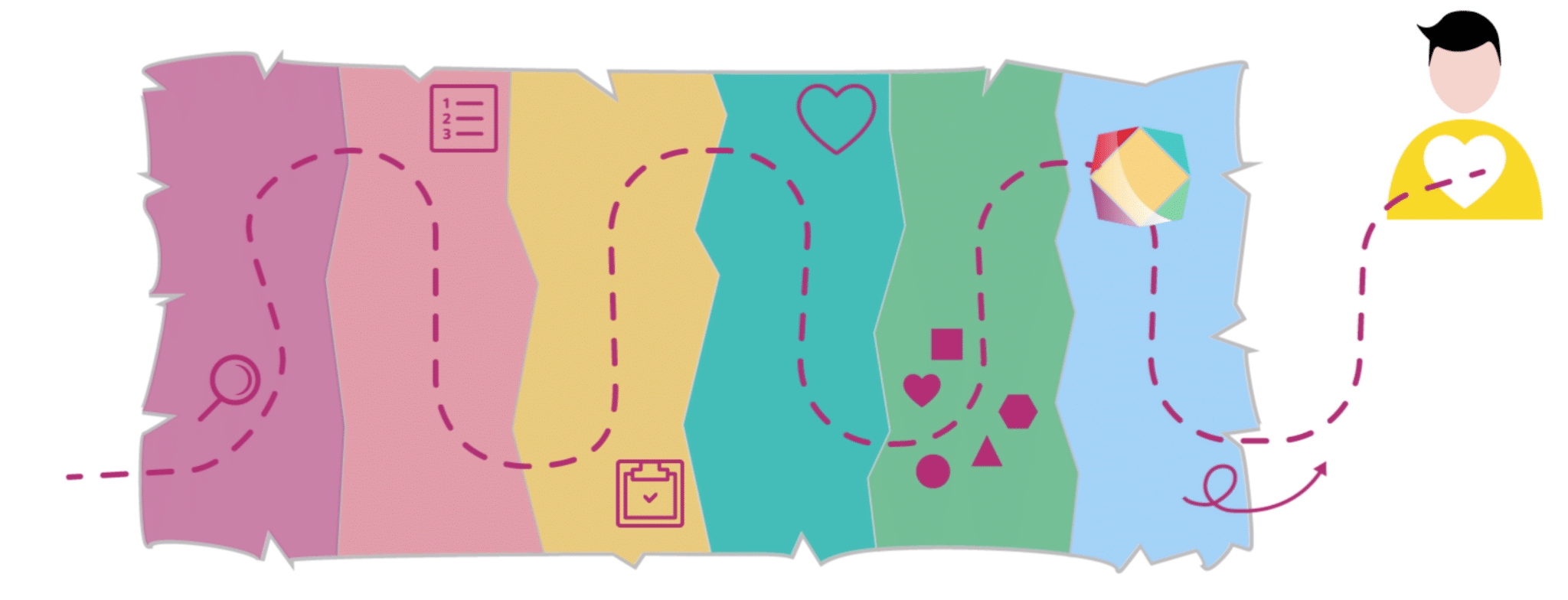
Screenshot from the animation for Santander
Summary
Communication in change management is important. To be effective plan it wisely. Take into account the stages of change, and the stages of grief that employees will go through during its implementation.
Ultimately, successful change hinges on empathetic communication that recognizes emotions, addresses concerns, and celebrates progress.
Finally, we also invite you to read one of our newest articles: Mastering your merger communication strategy for a seamless transition.
And if you need help in creating engaging and effective visual materials, we can help you with that.

